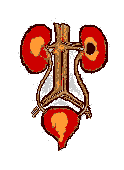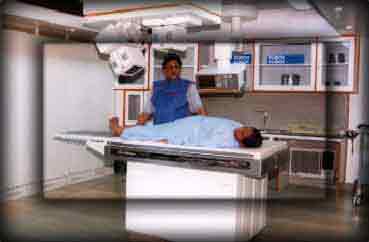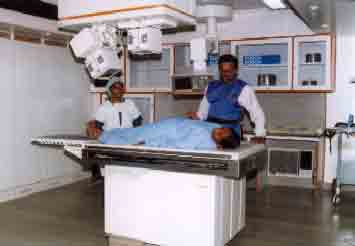|
|
|
 |
 |
|
 |
 |
|
What are the treatment options ?
The treatment options available are:
Open Surgery
ESWL
PCNL
URS
In case of Open Surgery, the patient is confined to the Bed for about 7 to 10 Days, after which he is advised to carry out only soft tasks for about One Month or so. It is very rarely required presently (3 to 5%)
In ESWL (Extra Corporeal Shockwave Lithotripsy), the patient is generally treated as an out patient. In some cases, the patient is admitted for a day . In ESWL, shock waves are generated by Electro magnetic / Piezo-ceramic / Spark-gap technology and these are directed on to the localised stone in the Kidney / Ureter and the stone is broken. The broken pieces / powdered stones passes out with urine. The patient is advised to take plenty of water / fluids to flush out the residue. Once the treatment is over, the patient may under take his routine duties. Thus there is no loss of productive man-hours.
What is ESWL ?
A scientific procedure to disintegrate kidney and ureteric stones, without surgery . ESWL - Extra Corporeal (outside the body) Shock Wave Lithotripsy (breaking of stones) is a procedure that breaks up kidney and ureteric stones into fine, sand-like particles without surgery . These particles are spontaneously passed out with urine. ESWL is being widely and successfully used in USA, UK, Germany and other parts of Europe since 1980. It is considered the most superior, safe, modern and scientific procedure of removing kidney and ureteric stones and is approved by Health Authorities all over the world. Over 5,000,000 patients have already been treated by over 1000 installations worldwide.
Is anaesthesia required ?
While open surgery, PCNL and URS require anaesthesia, ESWL does not require anaesthesia except in children. However, in order to keep the patient immobile during the treatment, mild sedation may be required.
It is emphasized that patients with co-morbid factors like Diabetes, Hypertension and elderly patients with Cardio respiratory diseases can undertake ESWL treatment without any hesitation.
What are the advantages of ESWL over
open surgery ?
|
What type of Stones can be treated ?
Single and Multiple stones of all chemical compositions, sizes and shapes can be disintegrated.
What preparations are required for Lithotripsy ?
Routine check-up and usual investigations as previously outlined.
How long does the treatment take and what is the duration of hospital stay ?
Average treatment takes 30-40 minutes, depending on size and number of stones. The patient has, however, to be kept under observation for a day, after which, normal duties can be resumed.
What happens after the stone is fragmented ?
The stone is fragmented into very fine particles. The patient is asked to drink plenty of fluids. The fragmented particles pass out with the urine.
What are the provisions for pre and post Lithotripsy follow up ?
Adequate facilities for follow up are available at the centre.
How many patients have been treated at R G Stone, Chennai ?
So far more than 5000 patients have been treated from India and Abroad.
____________________________________________________________________________________
PCNL (Percutaneous Nephro Lithotomy) is a procedure in which 'Key Hole surgery' is performed for large stones in the Kidney and upper part of the Ureter under Anaesthesia. The patient will be required to be admitted for about 3 to 4 days and may occasionally require Blood Transfusion.
URS (Ureteronoscopy) is performed in patients with stones in the middle and lower Ureter . The patient will be admitted for 1 or 2 days in the Hospital.